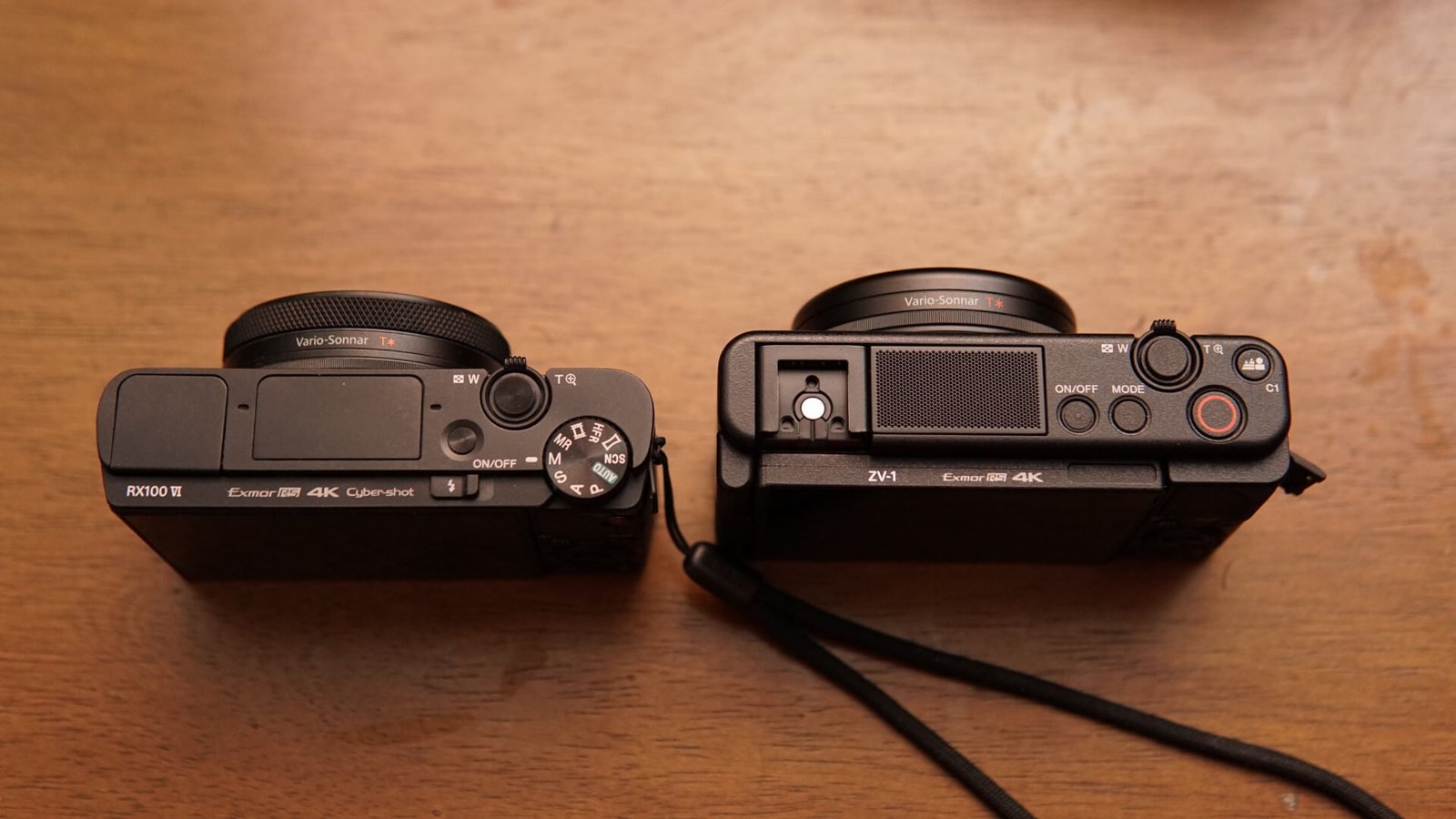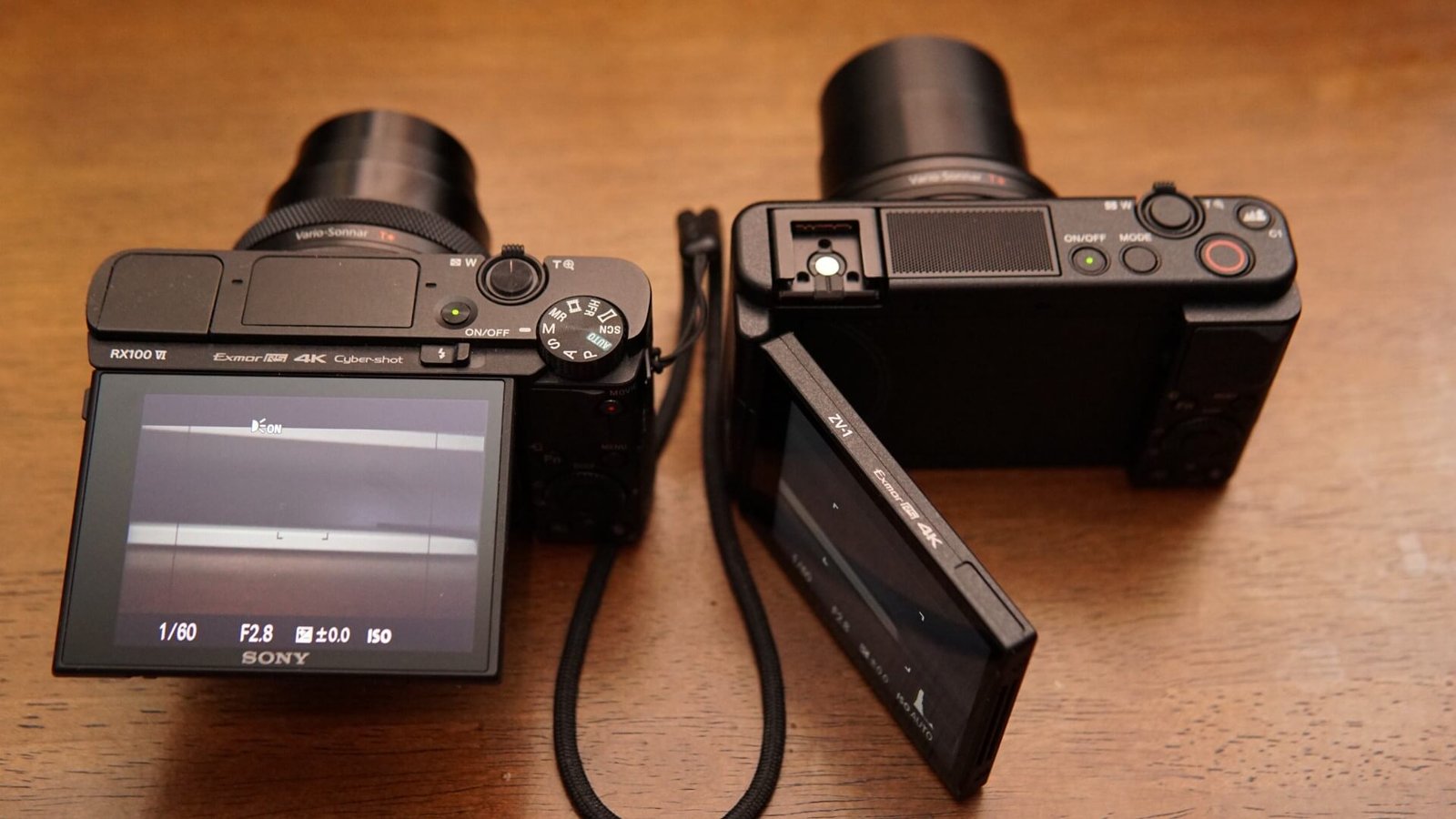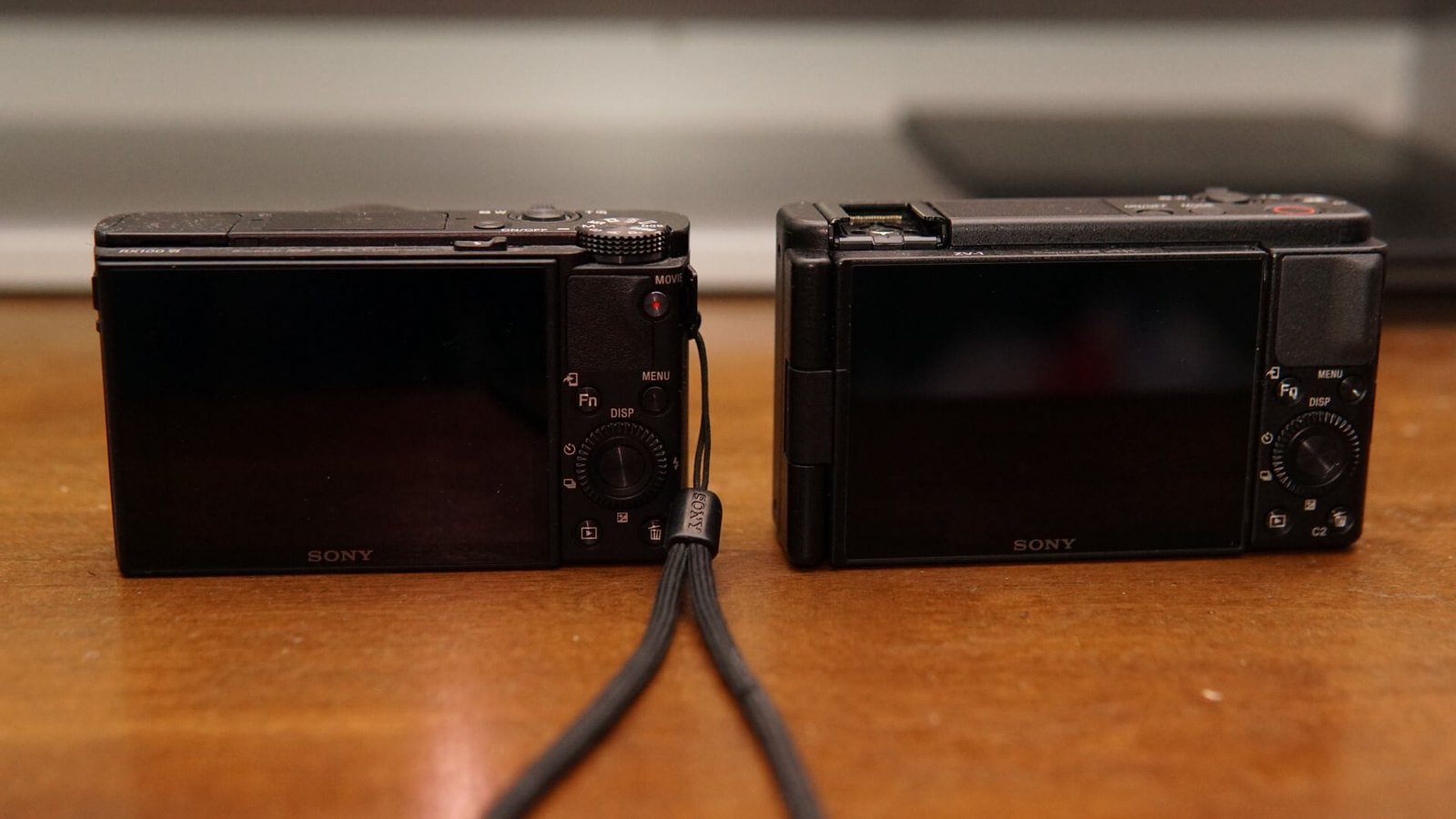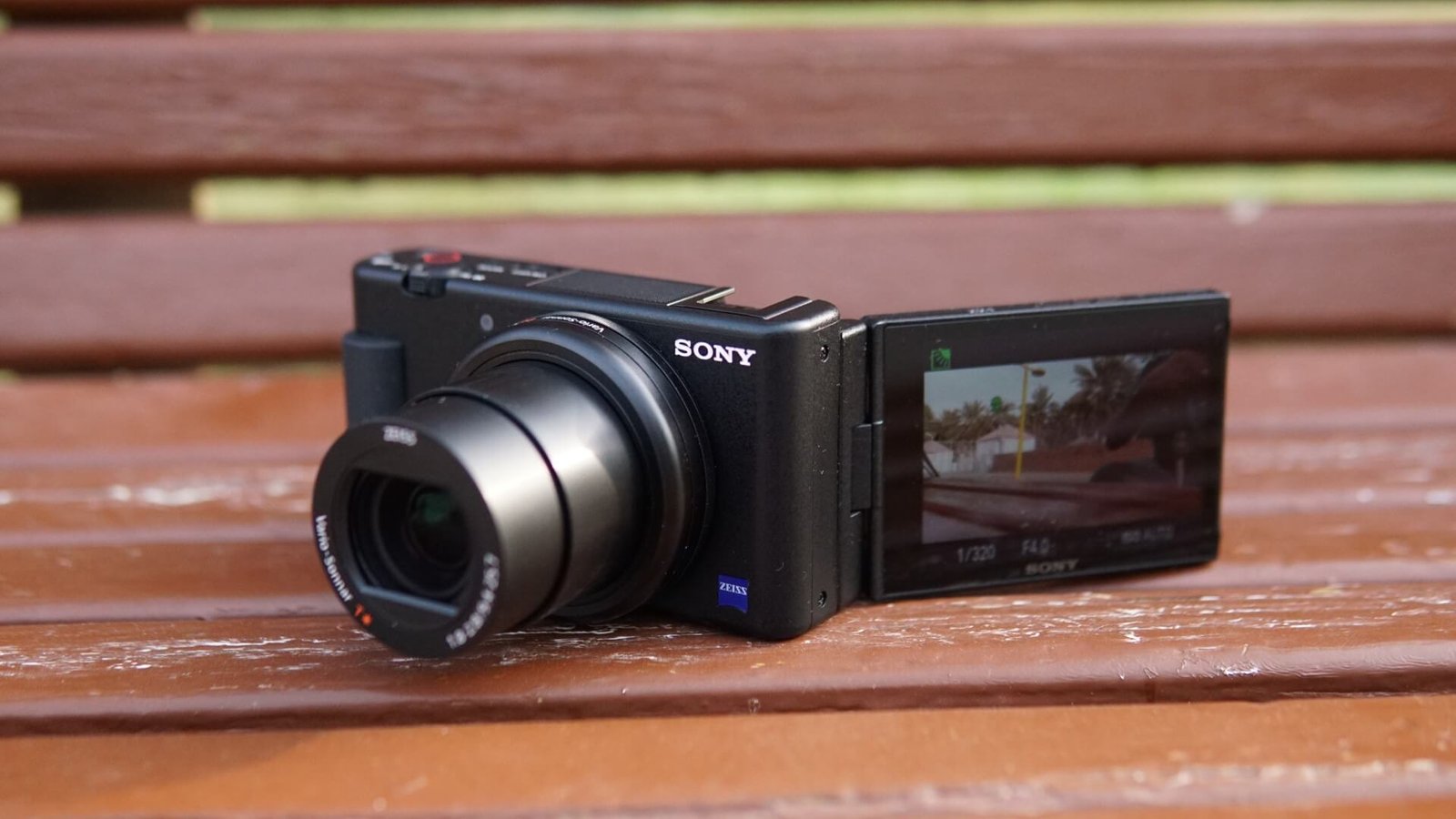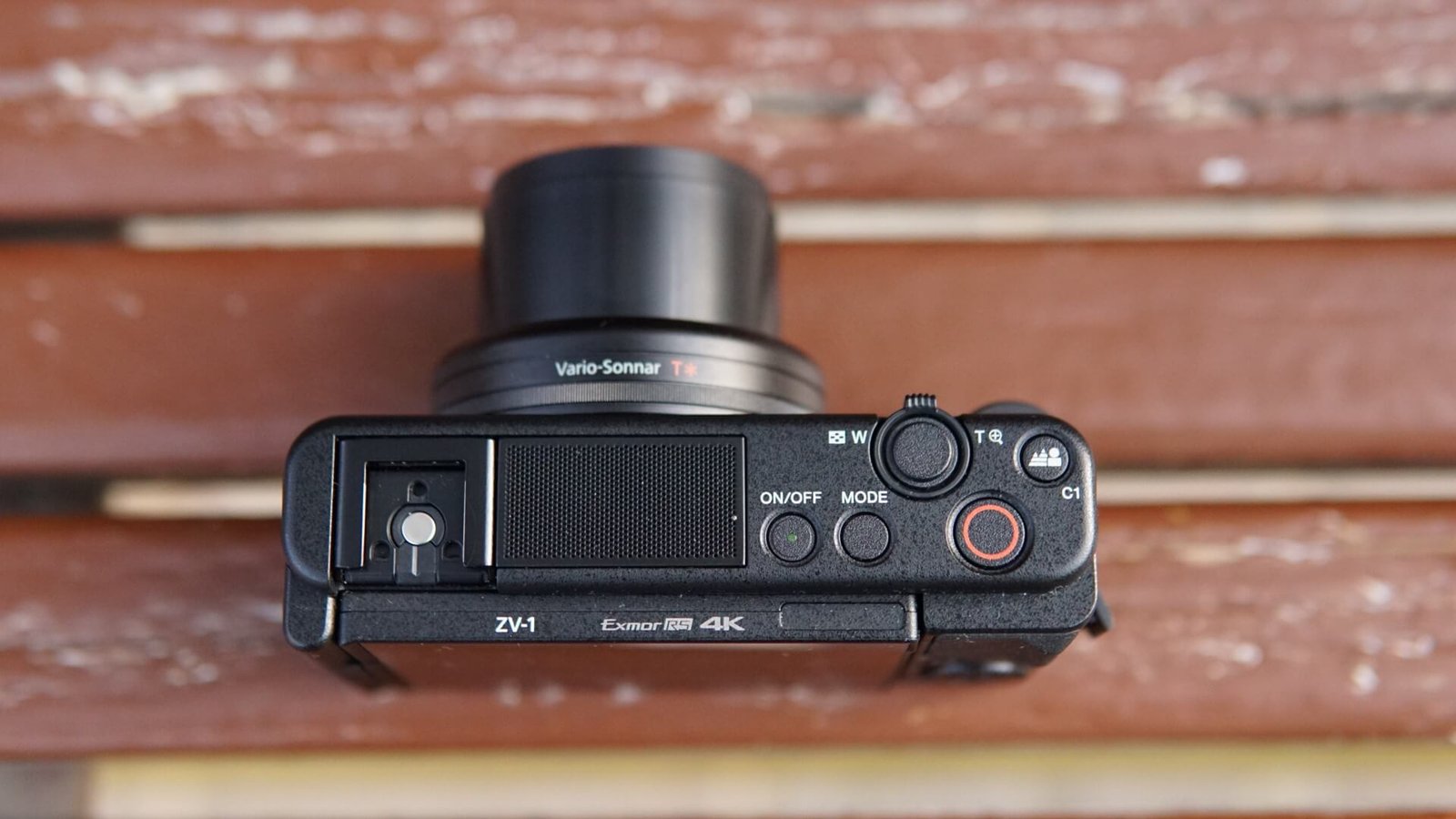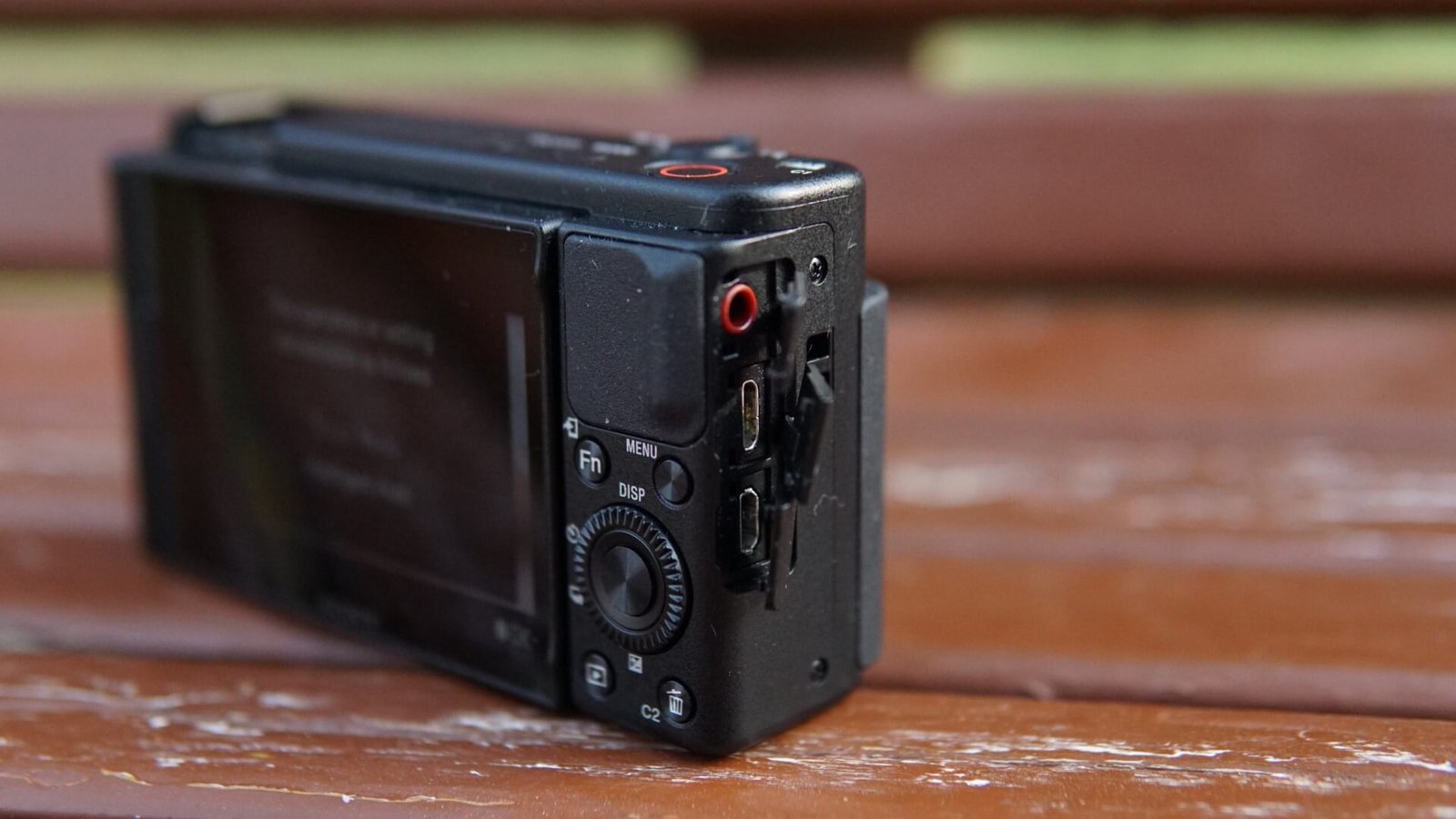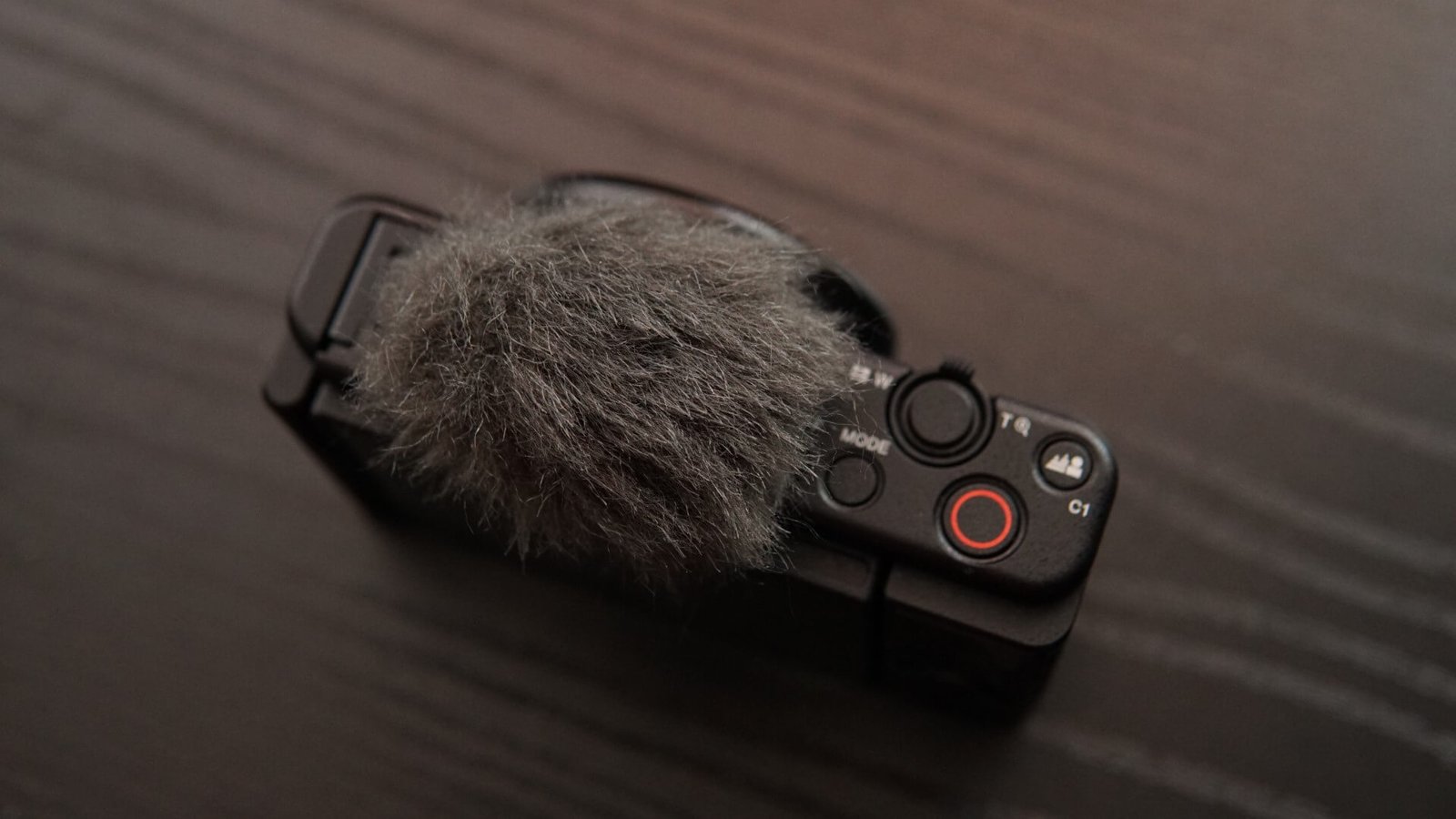While we have already reached a point where smartphones offer stellar image and video quality, the need for a dedicated professional yet compact and pocketable camera is still on demand. It’s been almost eight years since the introduction of the first Sony RX100 camera that caught the attention of both professionals and normal consumers alike, thanks to its one-of-a-kind 1-inch image sensor. Sony continued to innovate with more new product series such as the RX10 superzoom cameras, the RX0 action cameras, and more. Now, the company has started a new line of 1-inch sensor cameras that are designed with Vloggers in mind, and its called the Sony ZV-1. Let’s take a look at how good is the camera.
Design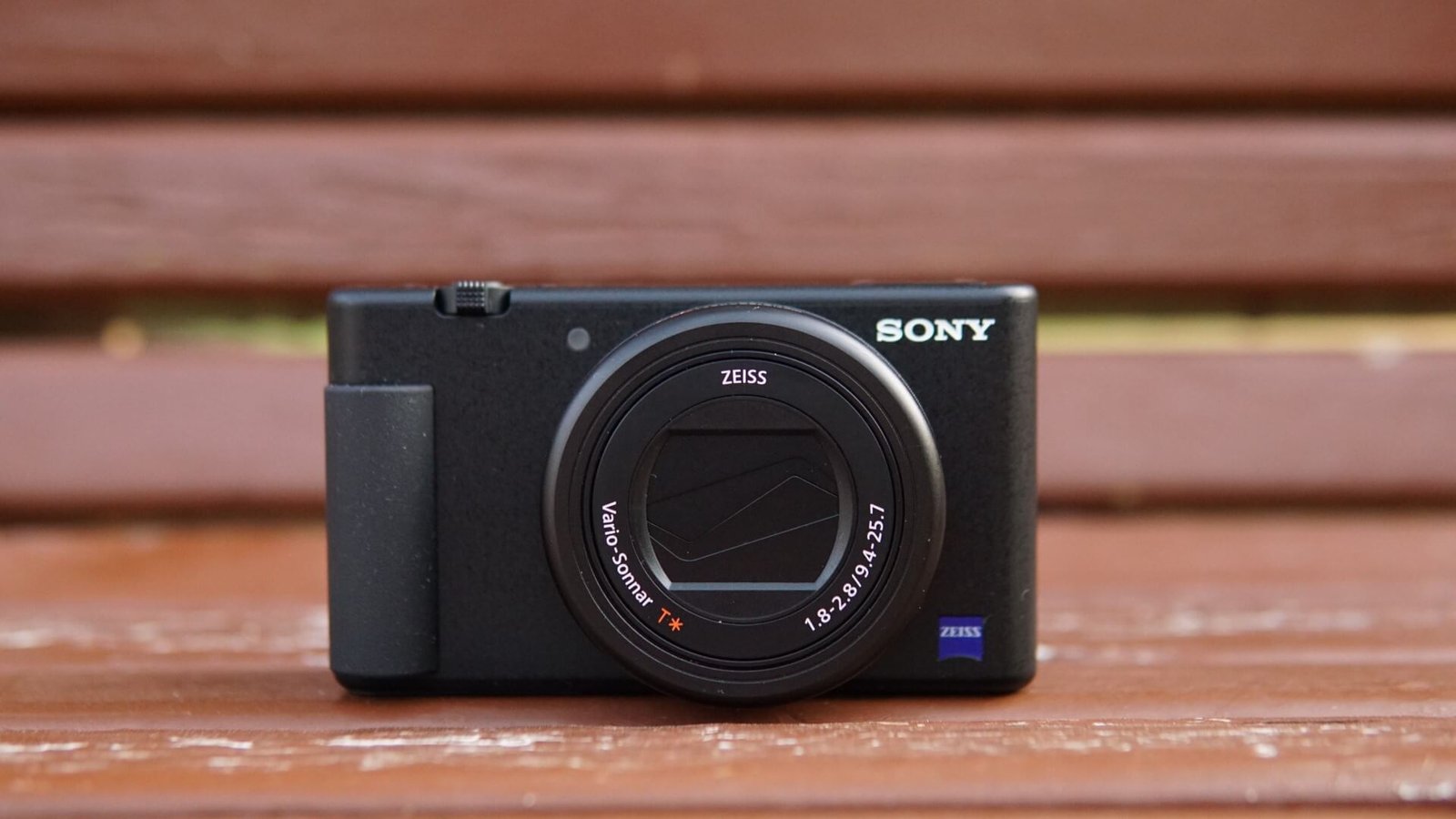
With portability in mind and to focus on content creators and Vloggers, the design of the Sony ZV-1 is closely based on the Sony RX100 series of cameras. At the first glance, one would mistake the camera to be either a Sony RX100 series shooter or one of the budget-focused CyberShot cameras. The camera weighs about 294g with battery and the memory card included. We had the Sony RX100 Mark 6 with us during the review and so we will also be highlighting the differences between the RX series and the ZV-1. Taking a look at the front portion of the camera, we can see the 24-70mm zoom lens (35mm format) with an aperture of F1.8 to F2.8. On the contrary, the last time Sony had used such a lens configuration is on the RX100 Mark 5. The RX100 Mark 6 and 7 featured a lens that is the 35mm equivalent of the 24mm to 200mm lens. One of the best features enjoyed by RX100 users is the inclusion of a dedicated aperture ring. Unfortunately, the ZV-1 does not feature its own aperture ring and the only way is to control the aperture is by either selecting the aperture priority or the manual mode. In the case of manual mode, users will need to switch between aperture and shutter speed by using the control wheel located on the rear of the camera.
Taking a look at the front portion of the camera, we can see the 24-70mm zoom lens (35mm format) with an aperture of F1.8 to F2.8. On the contrary, the last time Sony had used such a lens configuration is on the RX100 Mark 5. The RX100 Mark 6 and 7 featured a lens that is the 35mm equivalent of the 24mm to 200mm lens. One of the best features enjoyed by RX100 users is the inclusion of a dedicated aperture ring. Unfortunately, the ZV-1 does not feature its own aperture ring and the only way is to control the aperture is by either selecting the aperture priority or the manual mode. In the case of manual mode, users will need to switch between aperture and shutter speed by using the control wheel located on the rear of the camera.
There is also the zoom trigger on the front side of the camera. The addition of a handgrip on the ZV-1 is actually a surprise since none of the RX100 series of cameras ever had one. Sony mentions that the handgrip is optimized to offer a stable hold of the camera while taking selfies and reduce fatigue while shooting videos. Perhaps Sony may consider adding the same for future RX100 series cameras since the screen can be flipped for activating the selfie mode. Speaking of which, the Sony ZV-1 features an articulating screen that is very similar to the Sony A7SIII camera. The articulating display design is more suited for Vloggers and YouTubers, and the addition of a multi-interface shoe on the camera gives users the flexibility to add more accessories such as mic, flash, etc. The display can be opened up to 176-degrees and can be rotated up to 270-degrees.
The Xtra Fine TFT LCD on the ZV-1 has a screen size of a 3.0-inch touch display and comes with 921,600 dots of screen resolution. The camera also doesn’t feature its own pop-up electronic viewfinder or a pop-up flash as seen on the RX100 series. While some may think it is a downgrade, the camera is actually meant for Vloggers who mostly won’t be using these features. The same goes for the aperture ring that we mentioned before.
That said, Sony made some relocation of buttons as compared to the RX100 series. The power button, the mode button, and the record button are placed on the top right side of the camera. The buttons are quite large in size that allows easy access for the user. There is also the defocus button that automatically changes the background blur while shooting subjects or taking videos during vlogging sessions. The mesh-like portion that you see in the middle is actually the integrated mic system, featuring 3 capsules that can capture clear vocals and sound while recording videos. On the right side of the ZV-1, you will find the micro HDMI port, the micro USB port, and also the microphone jack. Sony has also included a windscreen that helps to reduce wind sounds while recording videos on outdoor situations, thereby keeping you from worrying about reshooting the video or editing the part of the video where there is too much wind.
Specifications and Performance
While Sony’s new Vlogging camera differs quite a bit with respect to design when compared to the RX100 series, the ZV-1 features the same 1-inch Exmor RS CMOS sensor with 20.1 megapixels. The lens used here is the ZEISS Vario-Sonnar T* type, featuring 10 elements in 9 groups. The lens comes with a 2.7x optical zoom and has a focal range from 9.4mm to 25.7mm. The 35mm equivalent focal length of that lens is 24mm to 70mm. The aperture of the lens ranges from the fast F1.8 up to F2.8. It’s good to see Sony bring back the 24-70mm focal length with F1.8 as the aperture. The F1.8 aperture will help for better bokeh and also shooting videos during low-light scenes. 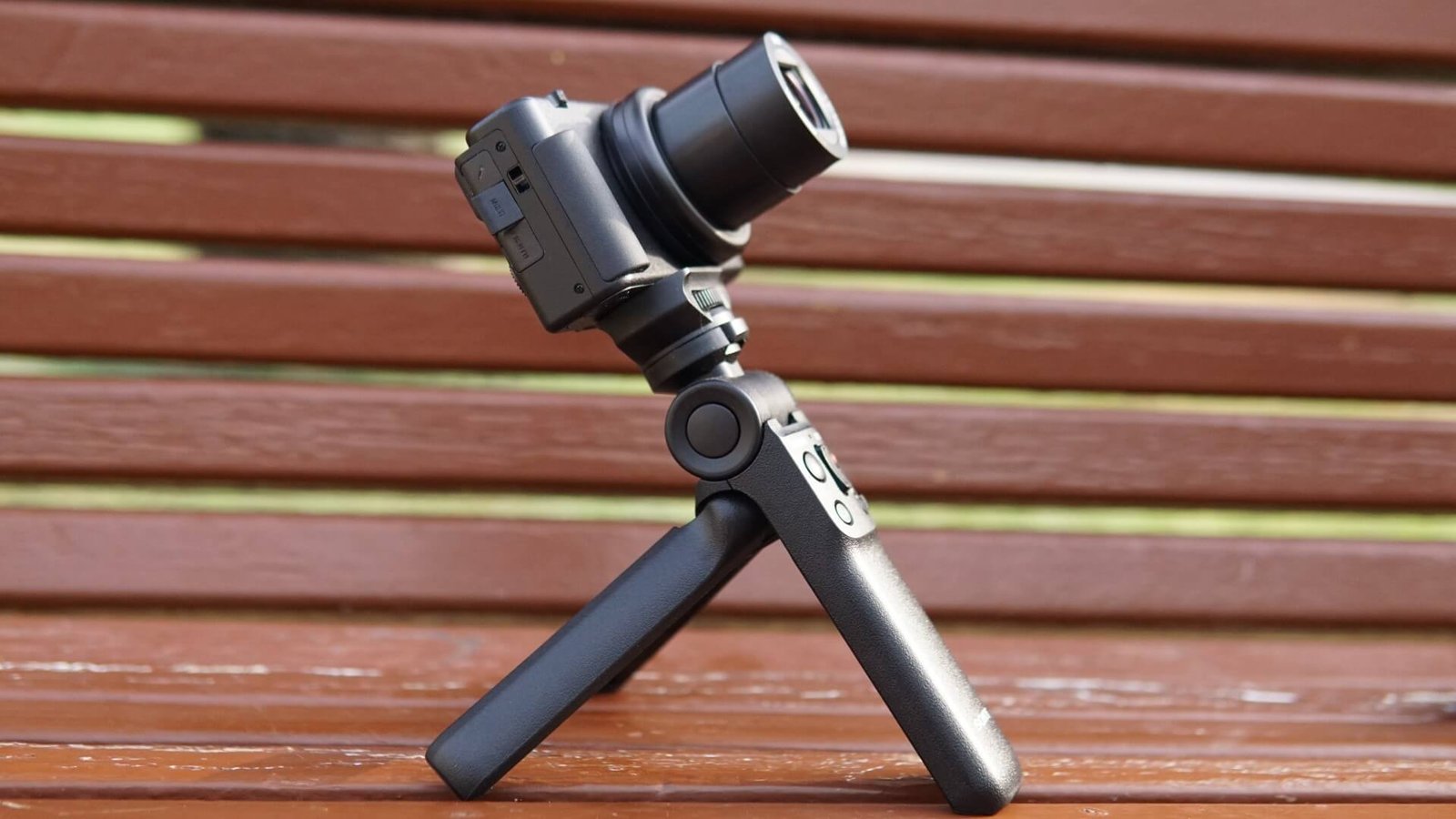 The Sony ZV-1 is powered by the BIONZ X image processor that helps to generate stellar image quality with less noise and other creative effects. The camera has an ISO range from 100 to 12800, which is sufficient for handling low-light situations. Sony also included the new color science and the natural skin tone effects that come with both image clicks and video recording. This is good for Vloggers who are constantly using the camera to snap high-quality images and videos. We also see the return of the built-in ND filter, which was also last seen on the RX100 Mark 5. The Sony ZV-1 also is capable of performing continuous shots at a maximum of 24fps. Sony also equipped the camera with a shutter speed capability from 4 to 1/2000 on Intelligent Auto mode and 30 seconds to 1/2000 for other modes.
The Sony ZV-1 is powered by the BIONZ X image processor that helps to generate stellar image quality with less noise and other creative effects. The camera has an ISO range from 100 to 12800, which is sufficient for handling low-light situations. Sony also included the new color science and the natural skin tone effects that come with both image clicks and video recording. This is good for Vloggers who are constantly using the camera to snap high-quality images and videos. We also see the return of the built-in ND filter, which was also last seen on the RX100 Mark 5. The Sony ZV-1 also is capable of performing continuous shots at a maximum of 24fps. Sony also equipped the camera with a shutter speed capability from 4 to 1/2000 on Intelligent Auto mode and 30 seconds to 1/2000 for other modes.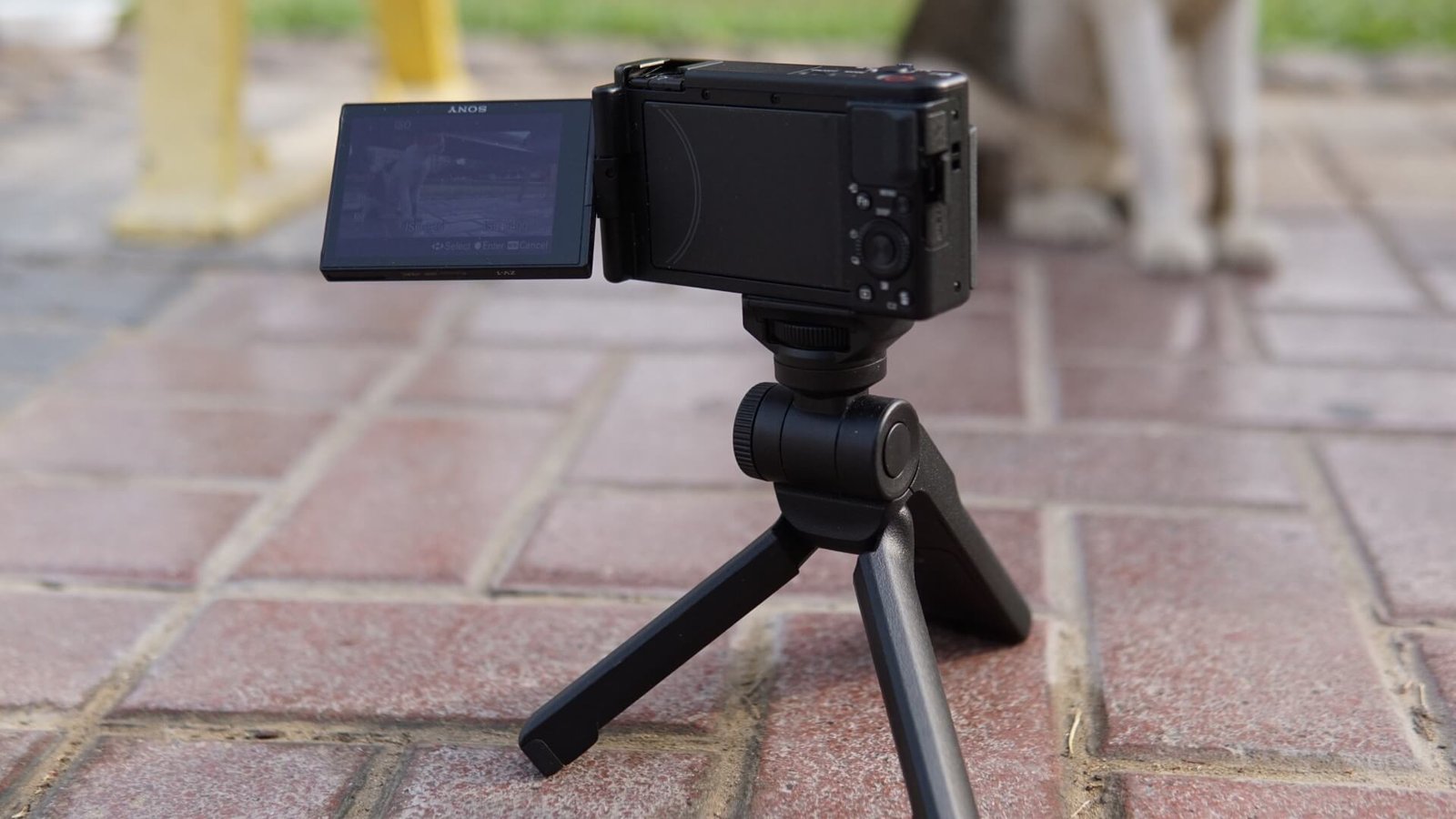 The autofocus of the 1-inch sensor is astounding and has a hybrid autofocus system consisting of phase-detection and contrast-detection points. There are 315 phase-detection points that should help for instant focusing during image and video recording, along with 425 points of contrast-detection points for accurate shots and sharpness. The ZV-1 also features the famous Eye-AF on humans and animals for stills and Eye-AF for human subjects during video recording. Speaking of which, the ZV-1 can record videos at Full HD 60p and 4K videos at 30p. It’s a shame that Sony did not include a 4K 60fps capability, since the camera was marketed as a Vlogging device in the first place and most of the flagship smartphones are capable of doing it. Video files are recorded on AVCHD or XAVC S format. The camera can shoot images at a max of 20MP in 3:2 mode, 18MP in 4:3 mode, and 17MP in 16:9 mode. The camera also allows users to capture images from recorded videos. The ZV-1 also brings support for S-Log 3 and S-Log 2 gamma curves for professional movie-recording workflows. This little shooter is also capable of 960fps slow-motion videos at Full HD resolution.
The autofocus of the 1-inch sensor is astounding and has a hybrid autofocus system consisting of phase-detection and contrast-detection points. There are 315 phase-detection points that should help for instant focusing during image and video recording, along with 425 points of contrast-detection points for accurate shots and sharpness. The ZV-1 also features the famous Eye-AF on humans and animals for stills and Eye-AF for human subjects during video recording. Speaking of which, the ZV-1 can record videos at Full HD 60p and 4K videos at 30p. It’s a shame that Sony did not include a 4K 60fps capability, since the camera was marketed as a Vlogging device in the first place and most of the flagship smartphones are capable of doing it. Video files are recorded on AVCHD or XAVC S format. The camera can shoot images at a max of 20MP in 3:2 mode, 18MP in 4:3 mode, and 17MP in 16:9 mode. The camera also allows users to capture images from recorded videos. The ZV-1 also brings support for S-Log 3 and S-Log 2 gamma curves for professional movie-recording workflows. This little shooter is also capable of 960fps slow-motion videos at Full HD resolution.
 While Sony had optical stabilization in most of the RX100 cameras, none of them were actually good enough to eliminate the shakes while you walk with the camera, unless you have a good gimbal. However, that changes with the Sony ZV-1 as it features an advanced and powerful SteadyShot mechanism (both optical and electronic stabilization) that good enough to help achieve smooth video recording without worrying about the jerks. We did try the stabilization performance by using the Sony handgrip and the stabilization turned on, and we were impressed with the shake-free videos the camera could produce and without the need for a gimbal.
While Sony had optical stabilization in most of the RX100 cameras, none of them were actually good enough to eliminate the shakes while you walk with the camera, unless you have a good gimbal. However, that changes with the Sony ZV-1 as it features an advanced and powerful SteadyShot mechanism (both optical and electronic stabilization) that good enough to help achieve smooth video recording without worrying about the jerks. We did try the stabilization performance by using the Sony handgrip and the stabilization turned on, and we were impressed with the shake-free videos the camera could produce and without the need for a gimbal.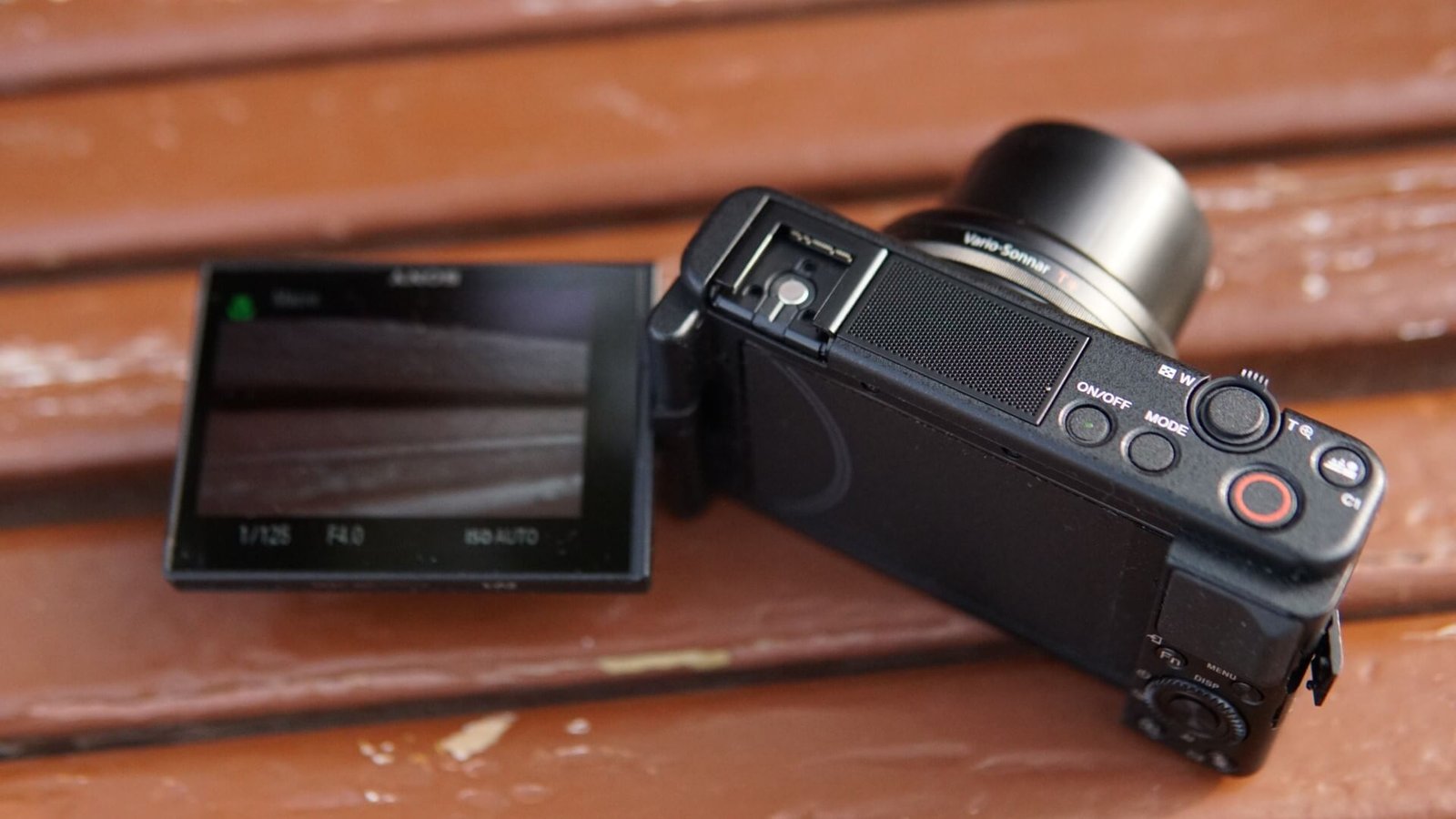 Sony also included an SD card slot that makes use of SDXC and SDHC cards up to UHS-1 U3 standards. We tested the speed by doing the continuous shots and it was able to capture 150 JPEG images in one go and the memory card was able to clear all images in less than a minute. The memory card we used is the extremely fast Sony G-series 32GB SDHC card. We should also mention that the camera is capable of unlimited video recording as well. However, while recording at 4K, you will need to switch the camera temperature to high or the camera would automatically stop the recording session to avoid the overheating issue. The camera also allows users to send images and videos to your smartphone by using the Sony Imaging Edge Mobile application. You can also wirelessly backup your content to your smartphone even when the ZV-1 is turned off. With all that said, the Sony ZV-1 comes with the NP-BX1 battery, the very same model that is used on the RX100 series of cameras. The camera is capable of capturing an approximate of 260 clicks in a single charge. You can also charge the battery while using the camera via its micro USB port.
Sony also included an SD card slot that makes use of SDXC and SDHC cards up to UHS-1 U3 standards. We tested the speed by doing the continuous shots and it was able to capture 150 JPEG images in one go and the memory card was able to clear all images in less than a minute. The memory card we used is the extremely fast Sony G-series 32GB SDHC card. We should also mention that the camera is capable of unlimited video recording as well. However, while recording at 4K, you will need to switch the camera temperature to high or the camera would automatically stop the recording session to avoid the overheating issue. The camera also allows users to send images and videos to your smartphone by using the Sony Imaging Edge Mobile application. You can also wirelessly backup your content to your smartphone even when the ZV-1 is turned off. With all that said, the Sony ZV-1 comes with the NP-BX1 battery, the very same model that is used on the RX100 series of cameras. The camera is capable of capturing an approximate of 260 clicks in a single charge. You can also charge the battery while using the camera via its micro USB port.
Verdict
Sony has been focusing on dedicated products meant for Vloggers and the new Sony ZV-1 is one of them. While one would simply argue that mounting a smartphone on a gimbal is more than enough to do the job, it should be remembered that the image sensor on a smartphone is far smaller than the 1-inch sensor found on the ZV-1 camera. The size of the image sensor matters a lot when it comes to the amount of light and information collected. The Sony ZV-1 is the start of a new series of professional compact cameras meant for the Vloggers. The camera borrows a strong resemblance of the RX100 series with some changes. It packs the 24-70mm lens with an F1.8 aperture that is more than sufficient for taking selfies and videos to be posted on social media. The camera also gets the vari-angle display that is better for video recording sessions than the flip displays seen on the RX100 series.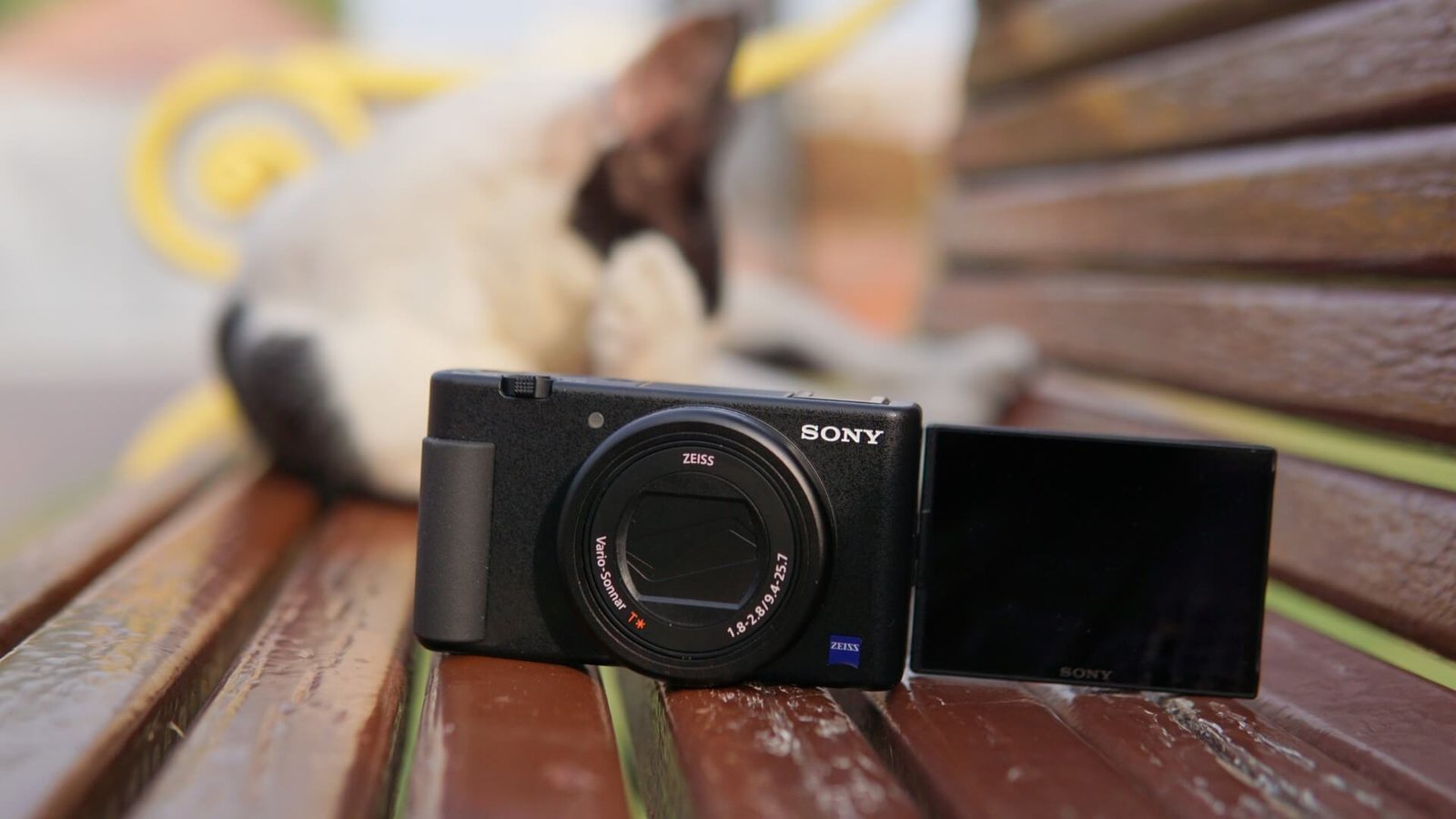 However, if you are a previous RX100 series user and are already into Vlogging, the exclusion of certain features such as the aperture ring, the pop-up viewfinder, and more may affect your buying decision. But that is the point as the camera is meant for Vloggers who would mostly not use these pro-level features during their video sessions. It’s a bit of a disappointment that the ZV-1 does not feature 4K videos at 60fps, which is something many would want in their checklist. That said, the Sony ZV-1 comes with the new color science effects, Eye-AF capability, and easy to use controls.
However, if you are a previous RX100 series user and are already into Vlogging, the exclusion of certain features such as the aperture ring, the pop-up viewfinder, and more may affect your buying decision. But that is the point as the camera is meant for Vloggers who would mostly not use these pro-level features during their video sessions. It’s a bit of a disappointment that the ZV-1 does not feature 4K videos at 60fps, which is something many would want in their checklist. That said, the Sony ZV-1 comes with the new color science effects, Eye-AF capability, and easy to use controls.
Is the Sony ZV-1 worth it over the RX100 series? Well, if you are into the Vlogging career and don’t want to mess with pro-level controls, then the ZV-1 is a good choice. Is the ZV-1 better than a smartphone? Well, unless you don’t care about features such as 4K 60p recording and if you don’t like to go through the hassles of transferring your images and videos to the smartphone before uploading to social media, the ZV-1 is a very capable camera that can produce amazing image stills and video quality. It’s also a cheaper alternative for those who won’t be able to afford professional cameras for Vlogging. We hope that the next iteration of the ZV series of cameras will come with further improvements and upgrades.



